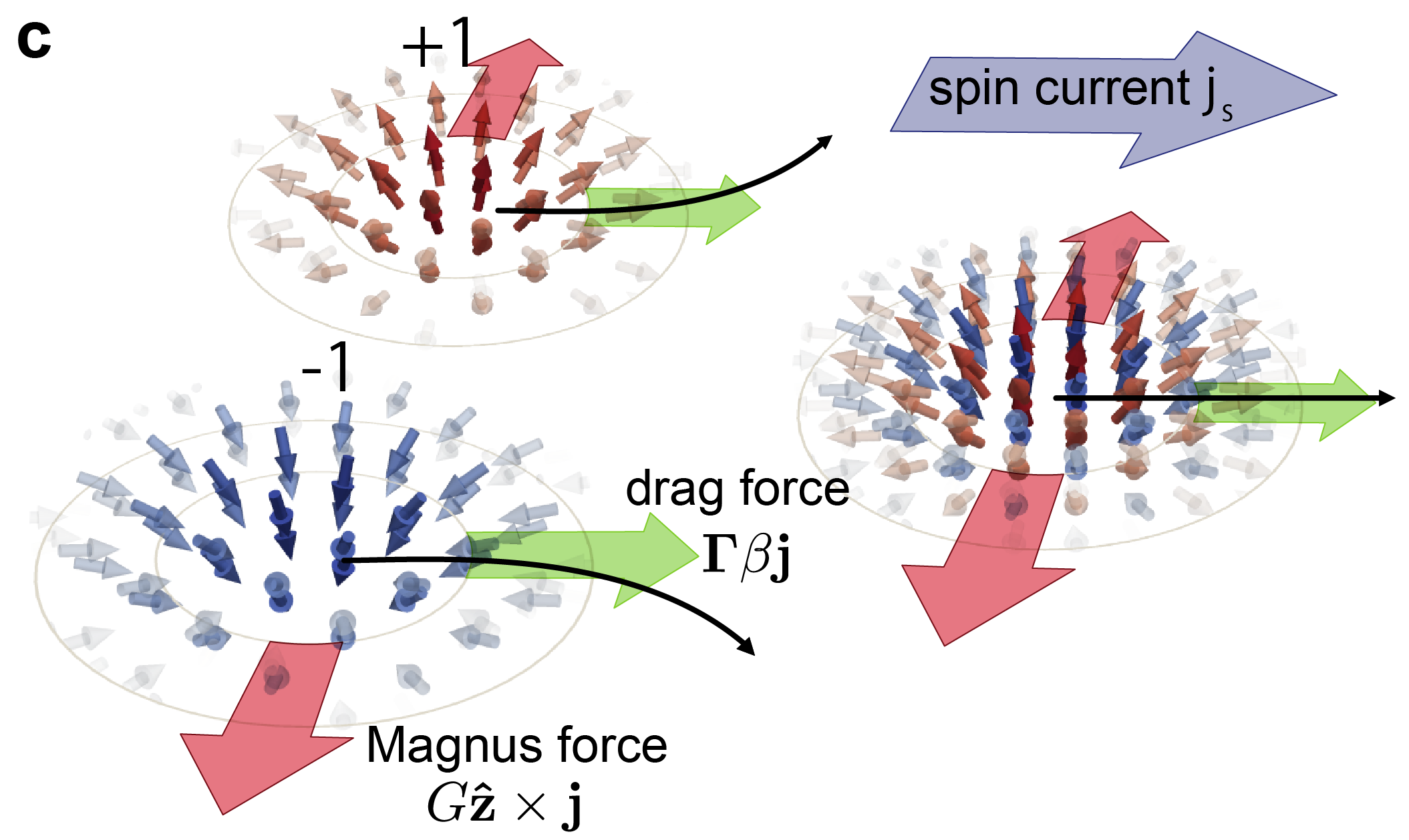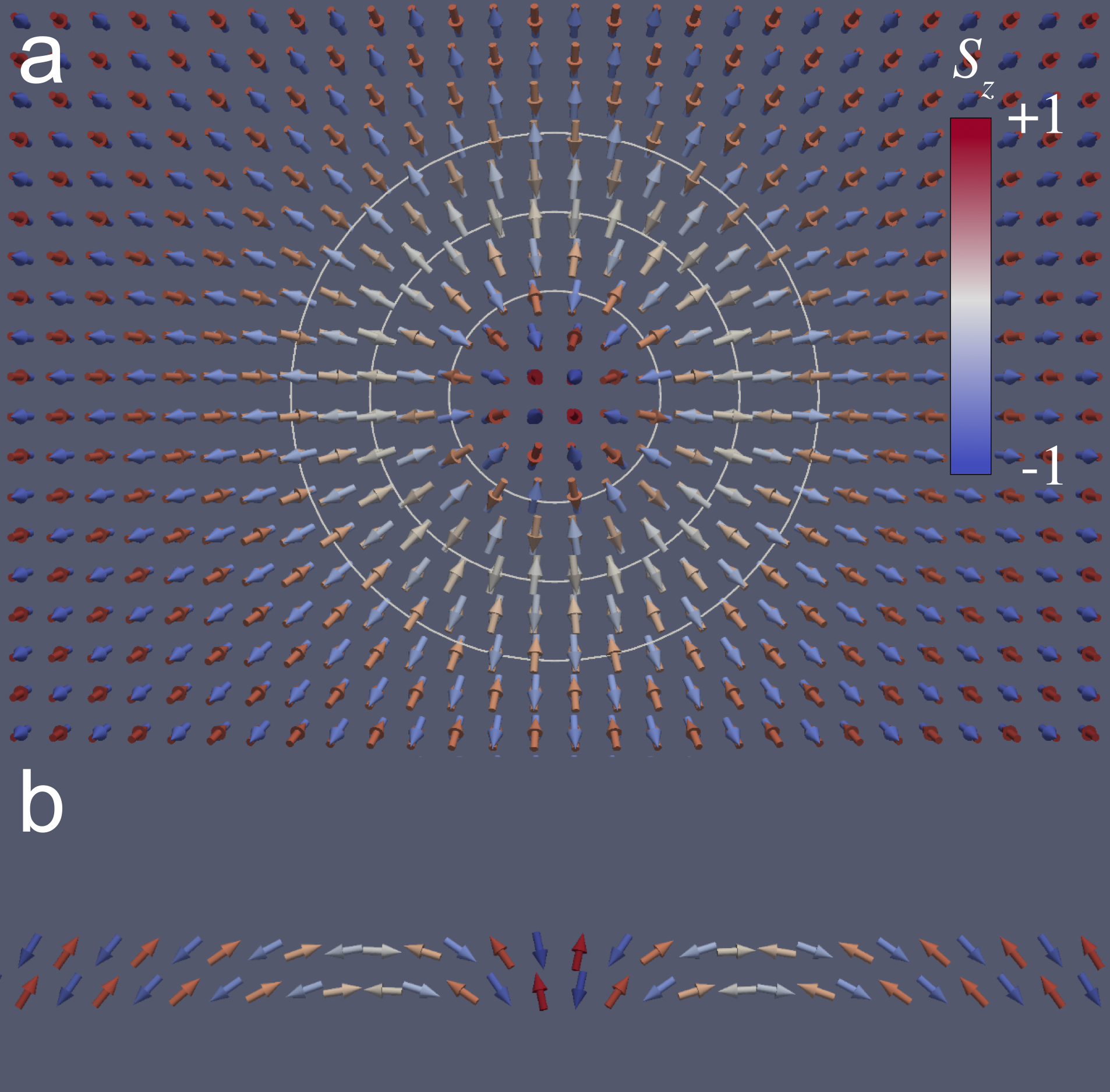Topics
2016.1.28
Antiferromagnetic Skyrmions
IMR Theoretical Physics Group
Manipulating small spin textures (that may serve as bits of information) by electric and spin currents is one of the main challenges in the field of spintronics. Ferromagnetic skyrmions recently attracted a lot of attention because they are small and not pinned as easily as domain walls when moved by electric currents. Meanwhile, ferromagnetic skyrmions have disadvantages as well, such as the presence of stray fields and transverse dynamics, making them harder to employ in spintronic devices. In this project, we propose a novel topological object: the antiferromagnetic (AFM) skyrmion and explore its properties by micromagnetic simulations. This topological texture has no stray fields (see Fig. 1) and is more mobile than its ferromagnetic analogue.
We find that the Dzyaloshinskii-Moriya interaction, which comes from relativistic spin-orbit effects and generally favors spin spiral structures, stabilizes AFM skyrmions. The AFM skyrmion radius depends on the strength of the Dzyaloshinskii-Moriya interaction and temperature. Moreover, the thermal properties, e.g. such as the radius and diffusion constant, are rather different from those of ferromagnetic skyrmions. Due to the unusual topology, the AFM skyrmions do not feel a Magnus force and therefore do not move transverse to an applied current (Fig. 2), which makes them interesting candidates for spintronic applications [1].
The next step will be to investigate the efficiency of temperature gradients for propagation of skyrmions in antiferromagnetic insulators and to develop a theory of spin-orbit torque driven AFM skyrmion motion.
References: [1] J. Barker and O. A. Tretiakov, ArXiv: 1505.06156 (2015).

|

|
|
| Fig.1 | Fig.2 |

